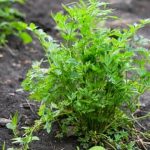Are you interested in growing your own Indian vegetables but don’t have a large outdoor space for a traditional garden? Container gardening might be the perfect solution for you. Container gardening allows you to grow a variety of Indian vegetables in small spaces, making it a convenient and accessible option for many aspiring gardeners. In this article, we will explore the world of container gardening and discover the best Indian vegetables to grow in containers.
Container gardening offers the opportunity to cultivate a vegetable garden regardless of the available outdoor space. Whether you live in an apartment with only a balcony or patio, or you have limited yard space, container gardening allows for flexibility and creativity when it comes to growing your own Indian vegetables. With the right knowledge and tools, anyone can enjoy the benefits of growing their own produce at home.
In this article, we will delve into the benefits of container gardening specifically for Indian vegetables. From discussing the specific advantages of growing Indian vegetables in containers to exploring the best varieties suited for this type of gardening, we will provide all the information you need to get started on your own container garden filled with delicious and nutritious Indian produce.
Whether you are new to gardening or looking to expand your current garden repertoire, container gardening for Indian vegetables is an excellent option worth considering.
Benefits of Container Gardening for Indian Vegetables
Container gardening has become increasingly popular among urban dwellers looking to grow their own fresh produce. When it comes to Indian vegetables, container gardening offers numerous benefits that make it an attractive option for those who want to enjoy the flavors of traditional Indian cuisine right from their own homes.
One of the main benefits of container gardening for Indian vegetables is the ability to control the growing environment. Many Indian vegetables thrive in well-drained soil with plenty of sunlight, and containers allow gardeners to easily create these optimal conditions. This means that even those living in apartments or homes with limited outdoor space can successfully grow a variety of Indian vegetables.
Furthermore, container gardening provides flexibility. With the use of containers, gardeners can move their plants around to follow the sun or protect them from harsh weather conditions. This flexibility also allows for easy experimentation with different growing techniques and methods, giving gardeners the opportunity to learn and improve their gardening skills while cultivating tasty Indian vegetables at home.
Finally, container gardening for Indian vegetables can be a more sustainable option compared to traditional gardens. By using containers, less water is needed as it is easier to control and optimize watering practices. Additionally, using containers minimizes weed growth and reduces the risk of soil-borne diseases, resulting in healthier and more productive plants.
| Benefits of Container Gardening | Details |
|---|---|
| Controlled Growing Environment | Containers allow for creating optimal conditions for growing Indian vegetables. |
| Flexibility | Moving containers allows following sunlight and experimenting with different techniques. |
| Sustainability | Less water usage and reduced risk of diseases make container gardening a sustainable option. |
Best Indian Vegetables for Container Gardening
When it comes to container gardening for Indian vegetables, there are plenty of options to choose from. In fact, many traditional Indian vegetables thrive in container gardens, making it easier for urban dwellers or those with limited gardening space to grow their own produce. Here are some of the best Indian vegetables that are well-suited for container gardening:
Tomatoes
Tomatoes are a staple in Indian cooking, and they can easily be grown in containers. Look for compact or determinate varieties that won’t take up too much space. With the right support and regular watering, you can enjoy a constant supply of fresh tomatoes throughout the growing season.
Spinach
Spinach is another versatile vegetable that does well in containers. It doesn’t require a lot of depth, so shallow pots or window boxes work well. Plus, spinach is packed with nutrients and is a popular ingredient in many Indian dishes.
Eggplant
Eggplant, also known as brinjal or baingan in Hindi, is a popular vegetable in Indian cuisine. This heat-loving plant thrives in containers and can produce an abundant harvest when given plenty of sunlight and well-draining soil.
Other excellent choices for container gardening with Indian vegetables include okra (bhindi), chili peppers (mirch), and leafy greens like fenugreek (methi) and amaranth (chaulai). By choosing the right varieties and providing proper care, you can easily grow a bountiful crop of these delicious and nutritious vegetables right on your balcony or patio.
Choosing the Right Containers for Indian Vegetable Gardens
When it comes to container gardening for Indian vegetables, choosing the right containers is crucial for the success of your garden. The type and size of containers can greatly impact the growth and yield of your plants. For Indian vegetables such as tomatoes, eggplants, and chillies, it is important to select containers that provide enough space for root development and adequate drainage.
One popular option for growing Indian vegetables is using large plastic or terracotta pots. These materials are durable, provide good insulation for plant roots, and allow for proper air circulation. Additionally, fabric grow bags are gaining popularity among container gardeners as they are lightweight, breathable, and promote better drainage. Whichever type of container you choose, make sure it has drainage holes at the bottom to prevent waterlogging.
When selecting the size of containers for your Indian vegetable garden, consider the mature size of the plants you wish to grow. For example, larger plants like okra or bottle gourd will require larger containers with a depth of at least 12 inches to accommodate their extensive root systems. On the other hand, smaller plants like green beans or spinach can thrive in shallower containers.
| Indian Vegetable | Ideal Container Size |
|---|---|
| Tomatoes | 5-gallon pot or larger |
| Eggplants | 3-gallon pot or larger |
| Chillies | 2-gallon pot or larger |
Soil and Fertilizer Requirements for Indian Vegetable Container Gardens
When it comes to growing Indian vegetables in containers, ensuring the right soil and fertilizer is crucial for a successful harvest. The soil requirements for container gardening are slightly different from traditional garden beds, as the plants rely solely on the nutrients present in the container. Additionally, choosing the right fertilizer is essential to provide the necessary nourishment for your Indian vegetables to thrive.
Choosing the Right Soil Mix
The key to a successful container garden starts with selecting the appropriate soil mix. For Indian vegetables, it’s important to use a well-draining medium that is rich in organic matter. A recommended mix is equal parts of peat moss, perlite or vermiculite, and compost. This combination not only provides good drainage but also ensures that your Indian vegetables receive the essential nutrients they need to grow healthy and strong.
Understanding Fertilizer Needs
Indian vegetables grown in containers have limited access to nutrients compared to those planted in open ground. Therefore, using a high-quality organic fertilizer is vital to supplement their nutritional requirements. Choose a balanced fertilizer with equal parts of nitrogen, phosphorus, and potassium (N-P-K) to support overall plant growth and development. Additionally, consider using a slow-release fertilizer or incorporating liquid fertilizers into your watering schedule for consistent nourishment throughout the growing season.
Additional Tips
To maintain optimal soil fertility for your Indian vegetable container garden, consider regularly adding organic matter such as compost or well-rotted manure. This practice helps replenish depleted nutrients and improves soil structure over time. It is also advisable to periodically check the pH levels of the soil and adjust them as needed to ensure that your plants can effectively absorb nutrients from the soil.
By understanding the specific soil and fertilizer requirements for Indian vegetable container gardens, you can create an ideal environment for your plants to thrive and produce an abundant harvest of flavorful produce.
Watering and Maintenance Tips for Growing Indian Vegetables in Containers
Growing Indian vegetables in containers requires a different approach to watering and maintenance compared to traditional garden beds. Here are some essential tips to help your container garden thrive:
1. Proper watering: Indian vegetables grown in containers need consistent moisture, but they also require good drainage to prevent waterlogging. To achieve this, make sure your containers have drainage holes at the bottom. Water the plants when the top inch of soil feels dry, and be mindful not to overwater, as excessive moisture can lead to root rot.
2. Fertilization: Container-grown plants need regular fertilization since the nutrients in the potting soil can become depleted over time. Use a balanced fertilizer or organic compost every 4-6 weeks during the growing season to ensure healthy growth and bountiful harvests of your Indian vegetables.
3. Pruning and grooming: Regular maintenance tasks such as pruning, grooming, and removing dead or yellowing leaves are crucial for keeping Indian vegetable plants healthy and productive in containers. This allows for better air circulation, reduces the risk of disease, and promotes the development of new growth.
4. Mulching: Applying a layer of mulch on top of the soil helps retain moisture, suppresses weeds, and regulates the temperature of the root zone in containers. Use organic mulching materials like straw, dried grass clippings, or cocoa bean hulls to provide these benefits while adding nutrients to the soil as they decompose.
By following these watering and maintenance tips, you can ensure that your Indian vegetable container garden thrives throughout the growing season, providing you with a fresh supply of delicious homegrown produce right at your fingertips.
Common Pests and Diseases for Indian Vegetables in Container Gardens
Container gardening is a great way to grow Indian vegetables in a limited space, and it also provides several benefits. One of the key advantages of container gardening for Indian vegetables is that it allows you to control the environment more easily, which can help prevent common pests and diseases. By growing your favorite Indian vegetables in containers, you can minimize the risk of pests and diseases that often plague traditional garden beds.
When growing Indian vegetables in containers, it’s important to be aware of the potential pests and diseases that could affect your plants. Some common pests to watch out for include aphids, caterpillars, and whiteflies, while common diseases include powdery mildew, leaf spot, and blight. Being proactive about pest and disease management is crucial for ensuring a healthy harvest of your favorite Indian vegetables.
To protect your container garden from pests and diseases, consider using natural remedies like neem oil or insecticidal soap. Additionally, practicing crop rotation when planting new batches of Indian vegetables can help reduce the risk of disease buildup in the soil. By staying vigilant and taking preventative measures, you can successfully grow a thriving container garden full of healthy Indian vegetables.
In addition to proactive pest and disease management, it’s important to regularly inspect your container plants for any signs of trouble. Keep an eye out for yellowing leaves, holes in the foliage, or any unusual spots or discoloration. By catching issues early on, you can take swift action to address them before they become a serious threat to your Indian vegetable container garden.
Harvesting and Using Your Homegrown Indian Vegetables
Once your Indian vegetables have reached maturity, it’s time to harvest and enjoy the fruits of your labor. The best part about growing your own vegetables in containers is that you get to experience the joy of picking fresh produce right from your own garden. When it comes to harvesting, timing is crucial. Make sure to pick your vegetables at the peak of ripeness for the best flavor and nutritional value.
Indian vegetables like okra, eggplant, and tomatoes should be harvested regularly to encourage continuous fruit production. For leafy greens such as spinach and fenugreek, you can start harvesting when the leaves are young and tender. Harvesting regularly will also prevent your plants from becoming overcrowded, which can lead to a decrease in productivity.
After harvesting your homegrown Indian vegetables, it’s time to put them to good use in the kitchen. Incorporate freshly picked vegetables into traditional Indian dishes like bhindi masala, baingan bharta, or aloo gobi. The flavors of homegrown vegetables are unmatched and will bring an authentic taste to your homemade meals.
Preserving surplus harvest by freezing, canning, or pickling is also a great way to ensure that you can enjoy your homegrown Indian vegetables all year round. By embracing container gardening for Indian vegetables, you not only have a sustainable source of fresh produce but also gain valuable knowledge about growing traditional Indian crops in a new environment.
Conclusion
In conclusion, container gardening for Indian vegetables is a convenient and rewarding way to grow your own fresh produce, even in limited spaces. By embracing this gardening method, you can enjoy the benefits of having a sustainable food source right at your fingertips. Additionally, container gardening allows you to easily manage the soil and environmental conditions for different types of Indian vegetables, ensuring optimal growth and harvest.
With the right containers, soil, and fertilizer, you can successfully grow a variety of Indian vegetables such as tomatoes, chillies, eggplants, and leafy greens on your balcony, patio, or even indoors. This opens up endless possibilities for anyone who wants to incorporate more fresh and nutritious produce into their daily meals.
By following proper watering and maintenance tips, as well as keeping an eye out for common pests and diseases that may affect your plants, you can ensure a bountiful harvest of homegrown Indian vegetables. Embracing container gardening for Indian vegetables not only provides a valuable source of organic produce but also offers a sense of satisfaction and accomplishment as you watch your plants thrive and eventually enjoy the fruits of your labor.
So why not give it a try? Start your own container garden today and experience the joy of growing your favorite Indian vegetables in a simple yet effective manner.
Frequently Asked Questions
What Vegetables Can Be Grown in Pots in India?
In India, a variety of vegetables can be grown in pots, including tomatoes, chilies, spinach, coriander, mint, and okra. These are suitable for the climate and can thrive in container gardening.
What Veg Is Best for Container Gardening?
When it comes to container gardening, certain veggies are more suitable than others. Vegetables like tomatoes, peppers, lettuce, radishes, and herbs such as basil and cilantro are known to do well in pots due to their compact growth habits.
What Vegetables Grow Well Together in a Container?
Some vegetables grow well together in a container due to their compatible root systems and growth habits. For example, tomatoes can be paired with basil or parsley, while carrots can be planted alongside onions or lettuce in a container garden. These combinations can benefit each other’s growth without competing for space.

If you’re looking to get into vegetable gardening, or are just looking for some tips on how to make your current garden better, then you’ve come to the right place! My name is Ethel and I have been gardening for years. In this blog, I’m going to share with you some of my best tips on how to create a successful vegetable garden.





